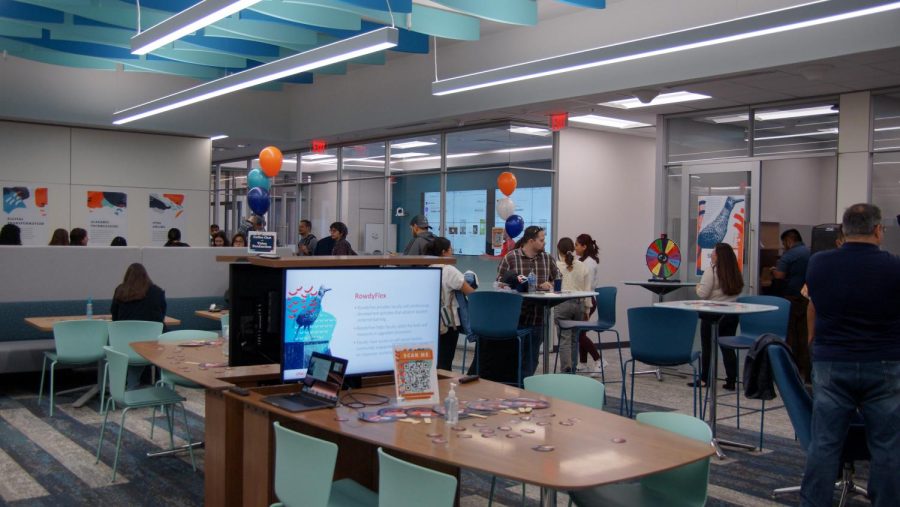Academic Innovation moves to larger, more collaboration-friendly space
January 31, 2023
On Wednesday, Oct. 25, UTSA’s Academic Innovation Center moved into a new office located in the Multidisciplinary Studies Building (MS 240).
Jonathan Gutierrez, an associate director for digital transformation and academic innovation, explained that the new center will serve as a place where students and faculty can “come to work with academic innovation.” Gutierrez also explained that the previous space housing Academic Innovation was not one that allowed multiple faculty and students to visit in case they needed help. According to Gutierrez, the team’s previous space was “very tucked away and very hidden.”
“Now we have a space that’ll help facilitate [interactions with faculty and students if they need any help],” Gutierrez said. “We’re really happy to have a space where people can actually visit us.”
Some of the things offered in the new space include an Adobe Creative Corner, where students and faculty “can come to learn about Adobe and take workshops and [have] trainings.”
Furthermore, the center will offer Canvas support once UTSA migrates to the platform beginning in the Fall 2023 semester. Faculty will also be able to meet with the instructional design team for help in building out courses and assistance with other projects.
Claudia Arcolin, executive director for digital learning experiences, further elaborated on some of the services provided by the center, which include one-on-one consultations with faculty and programs for faculty professional development that focus on developing quality courses and creating an inclusive environment in all class modalities. Arcolin also mentioned peer learning groups that are offered for faculty from different colleges to collaborate with each other.
“It’s a hub for collaboration with faculty, with other departments [like] Student Success, the library [and] institutional research,” Arcolin said.
One of the ways that Academic Innovation helps professors create relevant learning experiences for students is through the gamification of courses. Merriam-Webster defines gamification as “the process of adding games or game-like elements to something (such as a task) so as to encourage participation.”
One of the professors implementing gamification in the classroom is Cindy Roberts, assistant professor of practice in the Department of Mathematics. Roberts teaches calculus for biosciences and has incorporated a Stranger Things theme in the course.
“It’s a way for students to interact [while] … working actual calculus problems … it’s where they’re working together in groups as well, and they try to escape something by working the problems,” Roberts said. “I’ve done it in the past, and the students love it because it’s very engaging working together.”
Roberts’ course is an example of how interactive activities, simulation and group work can be incorporated into classes through gamification.
“It depends on what mastery path … you want to choose as the instructor for [your] students to excel,” Alexia Cormier, an instructional designer at Academic Innovation, said.
Cormier is a part of the Teaching, Learning and Digital Transformation department under Academic Learning, which works with instructors interested in adding these elements to their courses. As an instructional designer, Cormier meets with interested faculty and works to implement the latter’s visions and goals for classes while also teaching faculty the process.
“Sometimes, we’re even thinking [about] connecting two different departments together … having students [from both departments] come together with a massive project [on which they] can collaborate together,” Cormier said.
More information about Academic Innovation and the services they offer can be found at https://odl.utsa.edu/.








